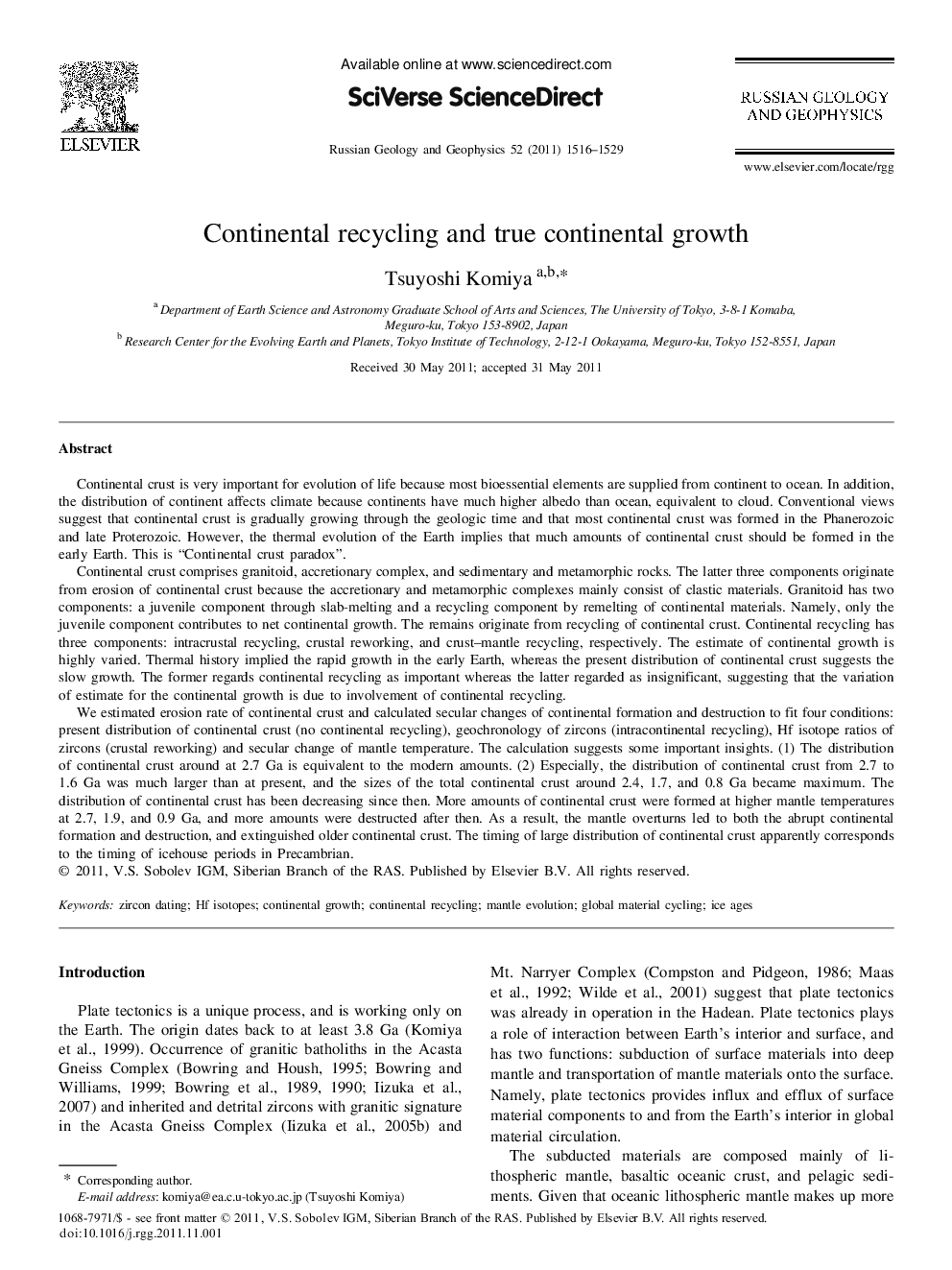| کد مقاله | کد نشریه | سال انتشار | مقاله انگلیسی | نسخه تمام متن |
|---|---|---|---|---|
| 4738544 | 1358325 | 2011 | 14 صفحه PDF | دانلود رایگان |

Continental crust is very important for evolution of life because most bioessential elements are supplied from continent to ocean. In addition, the distribution of continent affects climate because continents have much higher albedo than ocean, equivalent to cloud. Conventional views suggest that continental crust is gradually growing through the geologic time and that most continental crust was formed in the Phanerozoic and late Proterozoic. However, the thermal evolution of the Earth implies that much amounts of continental crust should be formed in the early Earth. This is “Continental crust paradox”.Continental crust comprises granitoid, accretionary complex, and sedimentary and metamorphic rocks. The latter three components originate from erosion of continental crust because the accretionary and metamorphic complexes mainly consist of clastic materials. Granitoid has two components: a juvenile component through slab-melting and a recycling component by remelting of continental materials. Namely, only the juvenile component contributes to net continental growth. The remains originate from recycling of continental crust. Continental recycling has three components: intracrustal recycling, crustal reworking, and crust–mantle recycling, respectively. The estimate of continental growth is highly varied. Thermal history implied the rapid growth in the early Earth, whereas the present distribution of continental crust suggests the slow growth. The former regards continental recycling as important whereas the latter regarded as insignificant, suggesting that the variation of estimate for the continental growth is due to involvement of continental recycling.We estimated erosion rate of continental crust and calculated secular changes of continental formation and destruction to fit four conditions: present distribution of continental crust (no continental recycling), geochronology of zircons (intracontinental recycling), Hf isotope ratios of zircons (crustal reworking) and secular change of mantle temperature. The calculation suggests some important insights. (1) The distribution of continental crust around at 2.7 Ga is equivalent to the modern amounts. (2) Especially, the distribution of continental crust from 2.7 to 1.6 Ga was much larger than at present, and the sizes of the total continental crust around 2.4, 1.7, and 0.8 Ga became maximum. The distribution of continental crust has been decreasing since then. More amounts of continental crust were formed at higher mantle temperatures at 2.7, 1.9, and 0.9 Ga, and more amounts were destructed after then. As a result, the mantle overturns led to both the abrupt continental formation and destruction, and extinguished older continental crust. The timing of large distribution of continental crust apparently corresponds to the timing of icehouse periods in Precambrian.
Journal: Russian Geology and Geophysics - Volume 52, Issue 12, December 2011, Pages 1516-1529